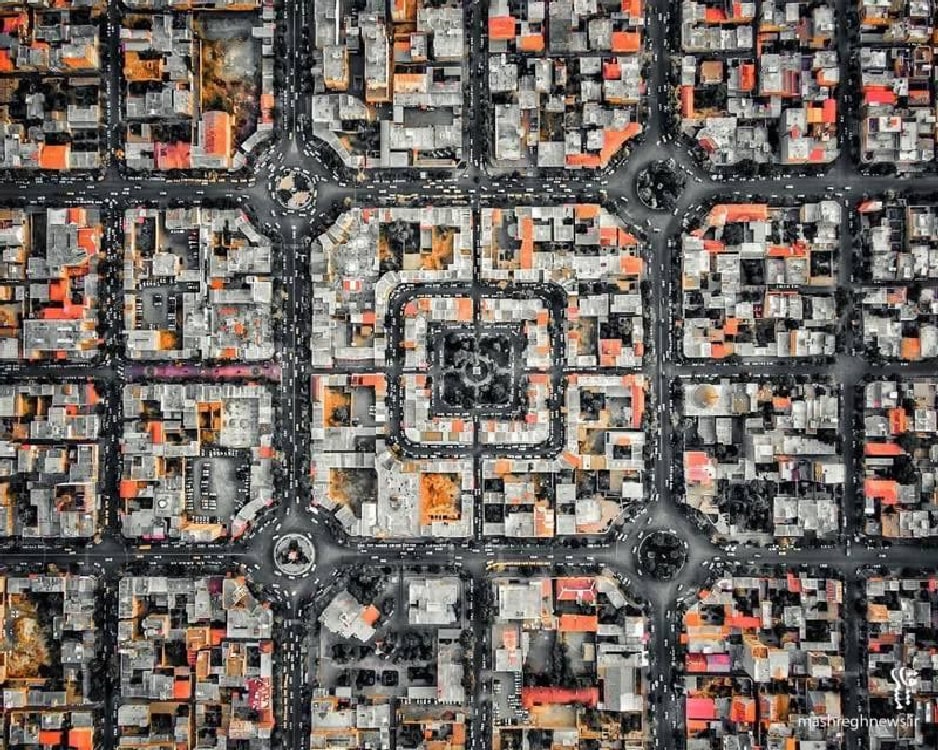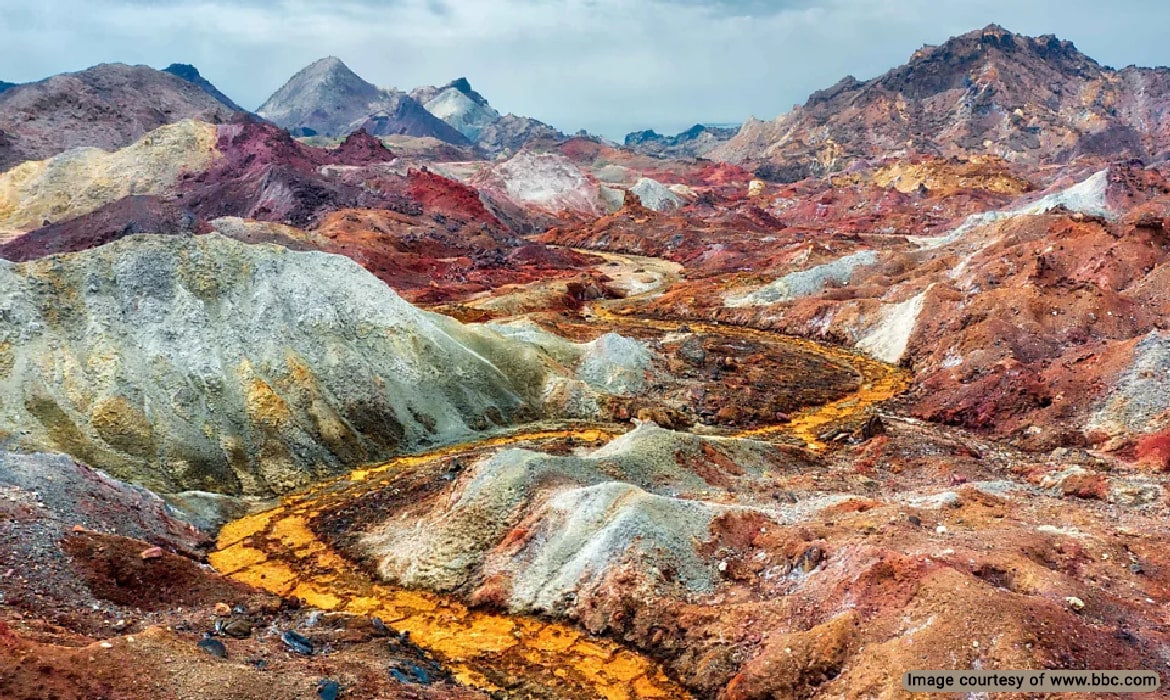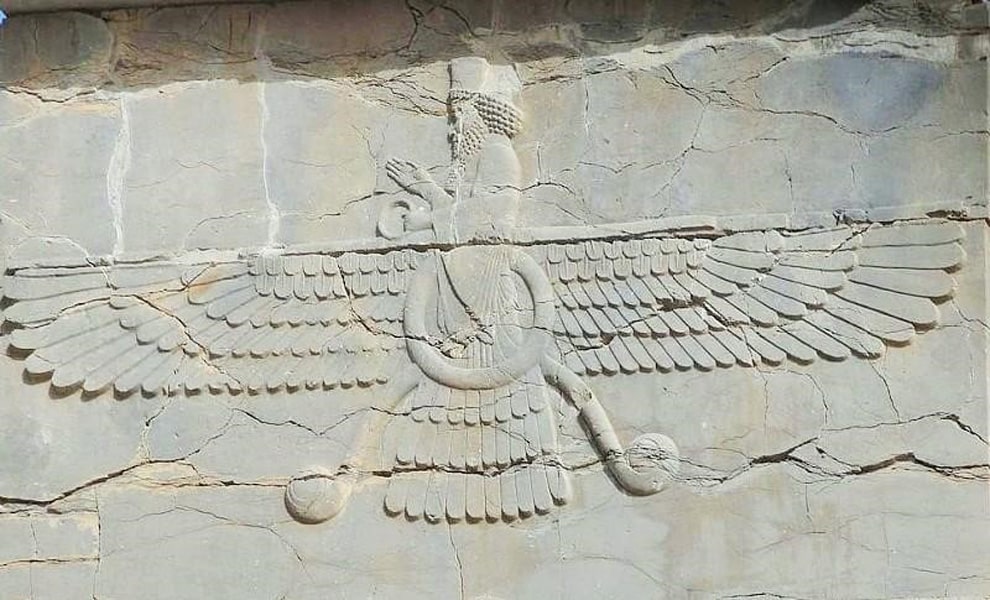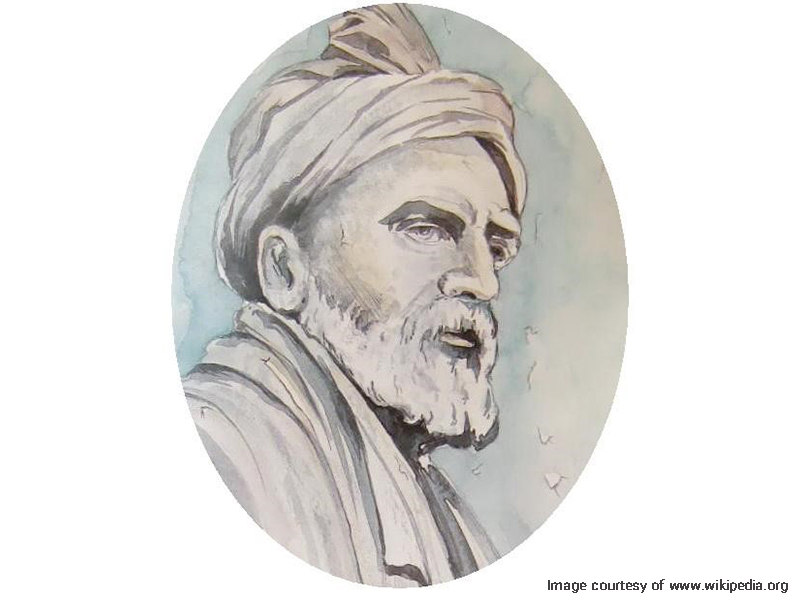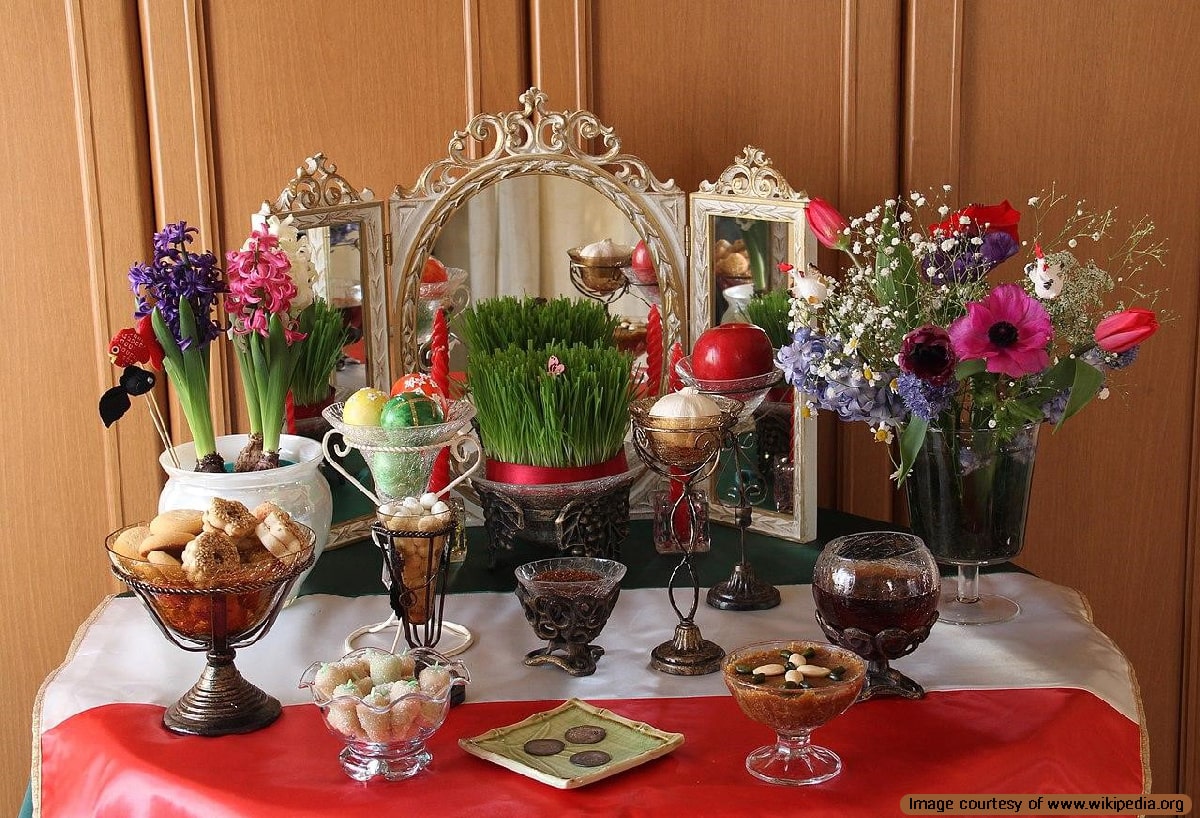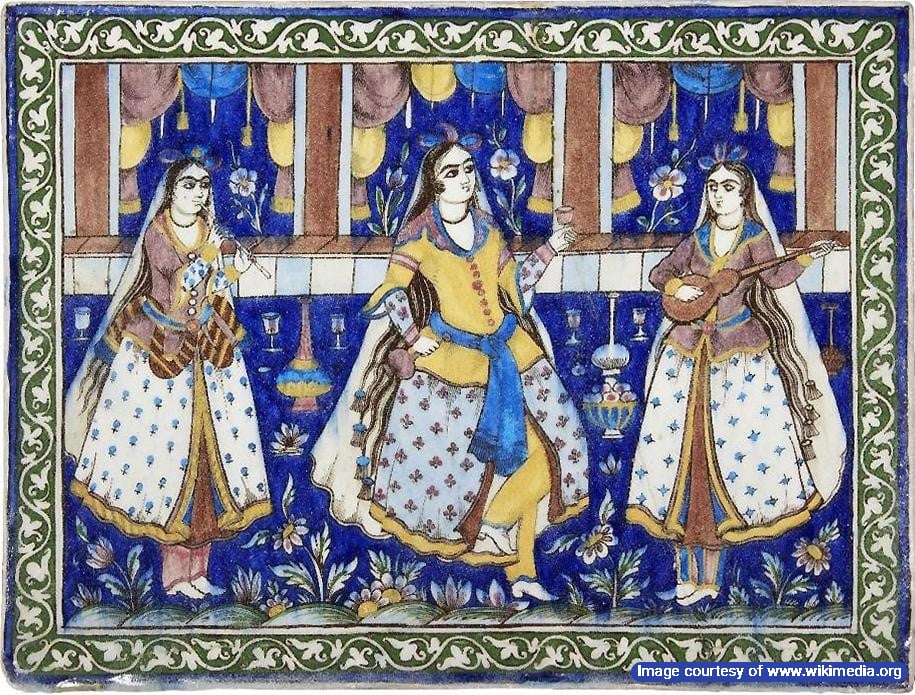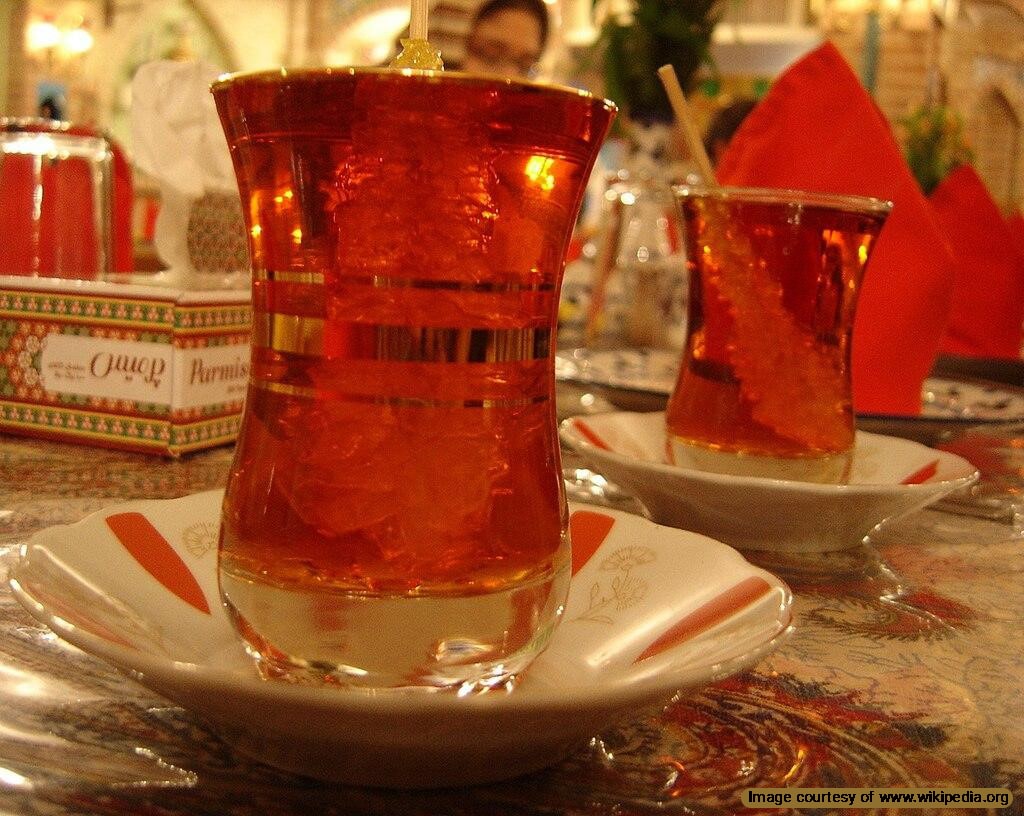
Persian tea has been the most common drink in Iran in the past century. This hot beverage is a traditional Iranian drink brewed with black tea leaves (Camellia sinensis). All green, yellow, white, and oolong tea types are processed from the Camellia Sinensis shrub. The black variation is oxidized and has a stronger flavor compared to others.
Persian Tea in Iranian Culture
Tea is the most common drink in Iranian communities and is a cultural symbol of hospitality. Iranians serve tea at family gatherings, religious ceremonies, weddings, funerals, business meetings, and practically every social encounter.
Before the popularity of tea, coffee was the most popular beverage in Iran. There were places like Ghahveh-Khaneh (Coffee houses) that served tea. People would gather in the Ghahveh-Khaneh, socialize, smoke tobacco on hookah, and pass their time. After the Qajar era, tea grew in popularity and these spots were known as Chai-Khaneh (tea houses). However, their function remained the same.
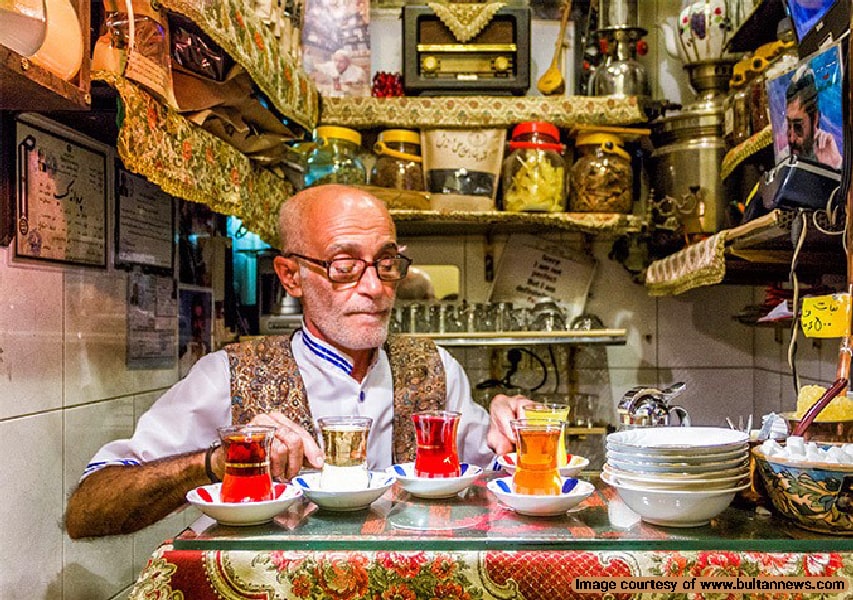
Serving tea is used as an icebreaker, a welcoming gesture, and a display of respect. In a gathering, tea is usually offered to the eldest member present, and then to others in order of age.
Serving tea is significant in many traditional social encounters and has certain implications. For example, when the family of a suitor courts another family to ask for their daughter’s hand in marriage, the bride is supposed to serve tea to the people present in the event. The quality of the tea and the bride’s mannerisms while serving the tea (such as the order of offering the tea to the present company) are traditional signs of their personality and character.
Persian Tea History
Black tea originated in China and was most likely popularized in West Asia after the Mongol invasion. There are no records of tea use in Iran before the 18th century, but some believe drinking black tea was common in Iran in the second century CE.
During the Safavid era, drinking tea became a royal habit, while the common people drank coffee. In the Qajar era, tea became popular among the masses and was imported from India. Amir Kabir, the Qajar prime minister, is known for promoting the use of tea. He purchased tea sets and Samovars from the French government and Russian businessmen. Amir Kabir also subsidized domestic Samovar production and employed an Isfahan-based master craftsman to create Samovars.
With the rise in tea consumption, tea cultivation seemed like a great opportunity to reduce imports. In 1882 Haj Mohammad Hossein Isfahani imported seeds from India but failed to properly launch his business.
Mohammad Mirza Qajar Qovanlu known as Kashef al-Saltaneh was appointed as the consulate general of Iran in India. In 1900, he returned to Iran with tea seeds and saplings aiming to cultivate tea in Iran. He is known as the father of tea production in Iran. With his efforts, the first Iranian tea cultivation project started in Lahijan in 1901. In 1934, the first tea processing company was established in Iran.
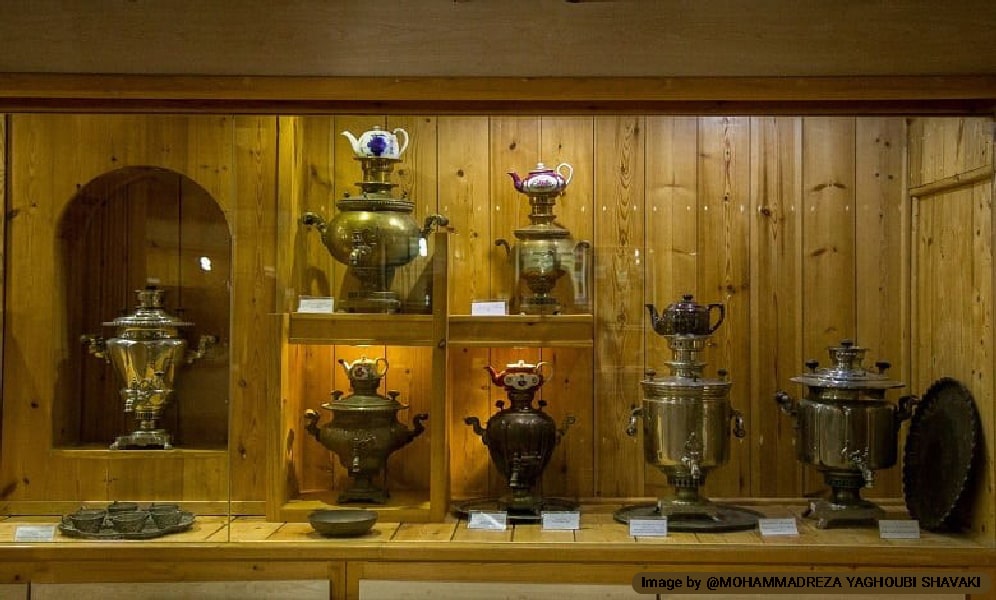
Tea Production in Iran
There are over 100 Iranian tea production companies in Iran. The largest land plots dedicated to tea cultivation are located in Gilan and Mazandaran provinces. Over 72,000 land plots in an area of approximately 32,000 hectares are used for tea production. In 1997, tea production in Iran peaked at over 300,000 metric tons. Today, this number is reduced to 100-150 thousand tons.
Tea harvest in Iran takes place three times a year: spring, summer, and autumn. Spring harvest yields the best quality, while the summer harvest contains higher amounts of caffeine, has a weaker aroma, and is more bitter. The autumn harvest has the lowest quality compared to the other two.
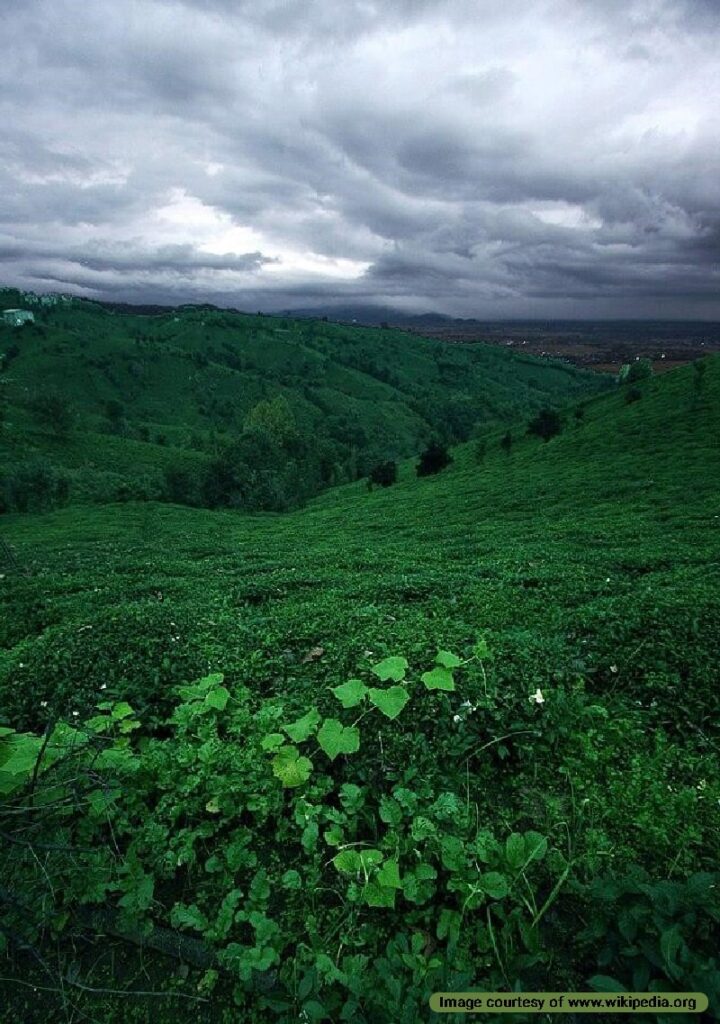
Types of Persian Tea
There are a variety of Persian teas that are categorized based on their processing.
- Handpicked tea: All the steps in the processing of this black tea variant are carried out traditionally and using hand. That is why it is known as “Dasti (handy)” in Iran. This tea has a strong aroma and is less bitter. This tea takes longer to properly brew (nearly 30 minutes).
- Zarin (pellet): This variant is processed from tea buds, and is rolled during production, taking the shape of a pellet. It is more bitter compared to other Persian teas and can be prepared in 15 minutes.
- Sargol (Tepal): This tea is the result of the first harvest. It is processed from one bud and the two top leaves of the tea plant. Many consider it the best variation of Persian tea. It has a pleasant aroma, and is slightly bitter, with a mild taste.
- Ghalam (stem): This tea variant is processed from tea stems and the lower leaves of the plant. It is more bitter and has an earthy taste. This tea takes longer to brew and yields a more reddish drink.
How to Brew Persian Tea?
Making tea is a daily ritual for many Iranians and varies based on personal preference. Iranians call this process “Dam Kardan”, and every Iranian household has a unique ritual for brewing their tea. The best way to brew Persian tea takes a bit of effort.
- First, you have to wash the tea leaves with cold water to remove dust. This makes the brewed tea brighter and more transparent.
- Then, bring a kettle of water to a boil. Place two teaspoons of loose Persian tea in a porcelain teapot and fill half of the teapot with boiling water. Some Iranians add saffron, cinnamon sticks, rose petals, dried lemon, or Cardamom pods for a better taste. Make sure to use a small amount of these additives to preserve the original flavor of the tea.
- Place the teapot on top of the steaming kettle and leave it for 20 minutes. Do not place the teapot over direct heat, it will ruin the taste of the tea. For better results, place a piece of cloth over the teapot.
- After 20 minutes, remove the teapot and pour into cups for consumption. If the brew is too strong for your taste, you can thin down the mix with hot water. You can add rosewater and sugar, or eat sugar cubes along with it. Iranians serve a variety of sweets and baked goods such as Baklava and Gaz candy. Some Iranians add a variety of distilled herbal extracts such as rosewater or distilled mint extract while serving tea.
Persian Tea Health Benefits
Black tea is the main source of flavonoids in the Iranian diet. It has a very low-calorie content and can help with weight loss. It is rich in Catechin, a flavan-3-ol compound with antioxidant properties. Regular consumption of black tea boosts heart health and prevents strokes. It contains L-theanine, an amino acid that boosts cognitive function and sleep and helps with high blood pressure. This drink can also reduce blood clotting.
It is a great alternative to coffee and energy drinks that rarely causes an allergic response. This popular drink has anti-inflammatory effects and promotes the growth of Prevotella bacteria in the gut microbiome. This bacteria ferments dietary fibers, producing short-chain fatty acids and endotoxins.
Black tea reduces blood glucose levels and therefore is a great drink for diabetic patients. The Theaflavins in this drink lowers blood cholesterol levels, reducing the chance of cardiovascular failure.
Disadvantages of Black Tea Consumption
Excessive consumption of black tea can have adverse effects on health. These include anxiety and insomnia, kidney and bladder issues, and headaches. In addition, the tannins and oxalates content in this tea can interfere with iron absorption. However, this effect does not apply to animal protein sources and foods with high Vitamin C content.
Black tea contains caffeine as well, which can upset the stomach and cause acid reflux. Health experts do not recommend drinking more than 4 cups of black tea per day.
Taste Authentic Persian Tea in Iran
Iranians love tea and love brewing and serving tea to guests. If you are traveling to Iran, your hosts will certainly offer you tea. Tea is an inseparable component of Persian culture and can be found in every Iranian household. If you are traveling to Iran, make sure to visit an apothecary and purchase authentic Persian tea.
If you visit northern Iranian provinces such as Gilan, Mazandaran, or Golestan, you can visit tea cultivation plants and see tea-covered land plots on the side of the roads. You can buy fresh tea leaves from the roadside shops, and enjoy a freshly brewed cup of tea.
Frequently Asked Questions about Persian Tea
If you have any other questions about Persian tea or other related topics, please let us know in the comments. We will respond as soon as possible.
What is Persian Tea?
Persian tea or Iranian tea is a variant of black tea brewed from loose black tea leaves. It is served hot, accompanied by sugar cubes or Gaz candy, Sohan (saffron brittle toffee), or other sweets and baked goods.
How do I brew Persian tea?
Persian tea is brewed from loose tea leaves and hot water. Add 2 teaspoons of loose black tea leaves to a teapot and fill half the teapot with boiling water. Some Iranians add other herbs such as saffron, cinnamon, cardamom, or dried lime to the mix. Place the teapot over a boiling kettle and let the tea brew for 15-20 minutes with the heat from the steam. Do not place the teapot over direct heat, it will ruin the tea’s taste. You can thin down the brew by adding hot water and serving with sugar cubes, candy, or other preferred sweets or baked goods.
What is the most popular drink in Iran?
Persian tea (black tea) is by far the most popular beverage in Iran. Iranians drink tea with their breakfast, after lunch, in the evening, and even before sleep. In the last century, tea production and consumption have peaked in the nation. Coffee is the second most popular drink, but before the Safavid era, coffee was the most popular drink in Iran.
How much tea do Iranians consume?
Iranians account for around 5% of the global tea consumption. Meanwhile, Iranians comprise 1.1% of the world’s population. Therefore, In addition to domestic cultivation, Iran imports between 80,000 to 100,000 metric tons of tea annually.






